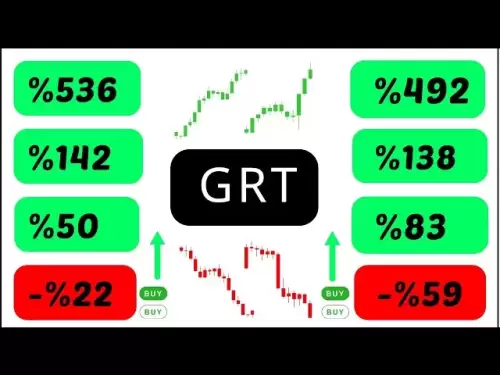 |
|
 |
|
 |
|
 |
|
 |
|
 |
|
 |
|
 |
|
 |
|
 |
|
 |
|
 |
|
 |
|
 |
|
 |
|
Cryptocurrency News Articles
Bitcoin, Layer 2, and Lightning Network: A New Era for Digital Transactions
Jun 25, 2025 at 09:01 pm
Explore the latest advancements in Bitcoin's Layer 2 solutions, focusing on the Lightning Network and Taproot Assets for efficient, secure, and low-cost digital transactions.
The Lightning Network is evolving! With innovations like Taproot Assets, Bitcoin's Layer 2 is becoming a hub for secure, low-cost, multi-asset instant transfers.
Lightning Network: The Foundation
Originally proposed in 2015, the Lightning Network utilizes payment channels to enable faster and cheaper Bitcoin transactions. Key implementations are driven by Blockstream (CLN), Lightning Labs (LND), ACINQ (Eclair), and Spiral (LDK). The core innovation lies in bidirectional payment channels without hard expiration dates and the use of Hash-timelock Contracts (HTLCs) for atomic routing of payments.
While liquidity dynamics present a challenge, requiring users to pre-allocate funds to receive payments, the Lightning Network has experienced significant growth since its launch in 2018.
Poon-Dryja Channels and Revocation Keys
Poon-Dryja channels address the limitations of unidirectional payment channels by introducing revocation keys. These keys incentivize parties to avoid using outdated transactions. Each party has commitment transactions, and updates require exchanging revocation keys for past transactions. Attempting to cheat by submitting an old transaction allows the victim to confiscate all funds from that old channel state.
Hash-timelock Contracts (HTLCs) for Secure Routing
HTLCs are crucial for securely routing payments across multiple payment channels. They create an output that can be spent either by the receiver providing a preimage to a hashlock or by the sender after a timelock expires. This mechanism allows for atomic swaps of assets and ensures that payments are securely routed across the network. The timelock gets longer at each hop from the receiver back to the sender, ensuring that parties can detect the preimage on-chain if a channel closes unexpectedly.
Gossip Protocol and Onion Routing for Network Awareness
The gossip protocol enables Lightning nodes to understand the network's topology, crucial for routing payments. Nodes broadcast information about themselves and their channels, allowing wallets to identify viable routes. This protocol uses channel announcements, node announcements, and channel updates to propagate network information.
Every message related to payment routing is onion routed, providing privacy by encrypting messages at each hop. Each participant only sees their immediate neighbors, not the ultimate source or destination.
Taproot Assets: Expanding the Lightning Network's Capabilities
Taproot Assets represent a new frontier, enabling a multi-asset protocol on the Bitcoin mainnet. Lightning Labs' v0.6 release opens doors for stablecoins and low-cost instant payments.
Stablecoins on Lightning: Instant and Affordable
Taproot Assets v0.6 integrates stablecoins like Tether's USDT, enabling faster and cheaper global transfers. This allows users to leverage the Lightning Network's speed and efficiency for a wider range of digital assets, ensuring transparency and security.
The group_key Identifier: Simplifying Asset Management
The new group_key identifier simplifies operations with fungible assets by grouping tokens with similar characteristics, improving user experience and security across wallets and platforms.
Request for Quote (RFQ) Protocol: Seamless Currency Conversions
Enhancements to the RFQ protocol facilitate smooth conversions between different digital currencies. Users can send and receive various currencies without intermediaries, streamlining operations and breaking down barriers in the global economy.
Bitcoin Hyper: A Layer-2 Protocol Leveraging Solana
Bitcoin Hyper aims to be Bitcoin's first full-fledged Layer-2 execution network, using the Solana Virtual Machine (SVM) for high speed and reliability. This allows for theoretical throughput above 60,000 transactions per second, enabling complex DeFi protocols, NFTs, and Web3 dApps on Bitcoin.
The transfer of value between Bitcoin and Bitcoin Hyper occurs via an independent bridge, allowing users to deposit BTC on Layer 1 and receive wrapped BTC on Hyper's network.
Final Thoughts
From humble beginnings to multi-asset functionality, the Lightning Network is rapidly evolving. While barriers to entry still exist, its effectiveness as a settlement layer is undeniable. With Taproot Assets and innovative projects like Bitcoin Hyper, the future of Bitcoin and Layer 2 looks brighter than ever. Who knows, maybe one day we'll all be zapping sats for our morning coffee without even thinking about it. How cool is that?
Disclaimer:info@kdj.com
The information provided is not trading advice. kdj.com does not assume any responsibility for any investments made based on the information provided in this article. Cryptocurrencies are highly volatile and it is highly recommended that you invest with caution after thorough research!
If you believe that the content used on this website infringes your copyright, please contact us immediately (info@kdj.com) and we will delete it promptly.
-

-

-

- Dogecoin Price Prediction: Crypto Analyst Eyes $1 Target – Is the Meme Coin Ready to Rally?
- Jun 26, 2025 at 04:45 am
- Dogecoin's recent price recovery has crypto analysts buzzing with bullish predictions, some eyeing a $1 target. But can the meme coin overcome short-term challenges and achieve liftoff?
-

-

-

-

-

-



























































